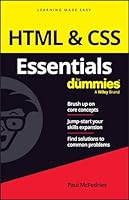
Numerical Analysis Using MATLAB and Spreadsheets
- Length: 366 pages
- Edition: 1
- Language: English
- Publication Date: 2001-10
- ISBN-10: 0970951116
- ISBN-13: 9780970951113
- Sales Rank: #9260073 (See Top 100 Books)
Numerical analysis is the branch of mathematics that is used to find approximations to difficult problems such as finding the roots of non-linear equations, integration involving complex expressions and solving differential equations for which analytical solutions do not exist. It is applied to a wide variety of disciplines such as business, all fields of engineering, computer science, education, geology, meteorology, and others. This book is written primarily for students/readers who have a good background of high-school algebra, geometry, trigonometry, and the fundamentals of differential and integral calculus. A prior knowledge of differential equations is desirable but not necessary; this topic is reviewed in Chapter 5. Chapter 1 is an introduction to MATLAB. The discussion is based on MATLAB Student Version 5 and it is also applicable to Version 6. Chapter 2 discusses root approximations by numerical methods. Chapter 3 is a review of sinusoids and complex numbers. Chapter 4 is an introduction to matrices and methods of solving simultaneous algebraic equations using Excel and MATLAB. Chapter 5 is an abbreviated, yet practical introduction to differential equations, state variables, state equations, eigenvalues and eigenvectors. Chapter 6 discusses the Taylor and Maclaurin series. Chapter 7 begins with finite differences and interpolation methods. It concludes with applications using MATLAB. Chapter 8 is an introduction to linear and parabolic regression. Chapters 9 and 10 discuss numerical methods for differentiation and integration respectively. Chapter 11 is a brief introduction to difference equations with a few practical applications. Chapters 12 is devoted to partial fraction expansion. Chapters 13, 14, and 15 discuss certain interesting functions that find wide application in science, engineering, and probability. This text concludes with Chapter 16 which discusses three popular optimization methods.







